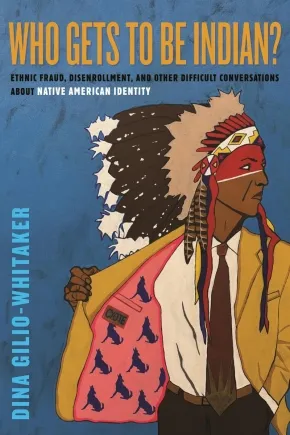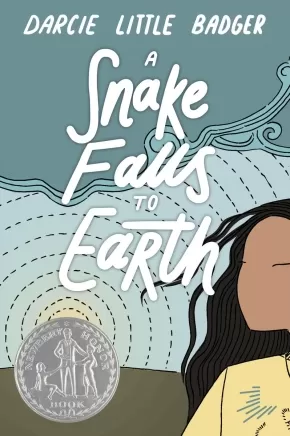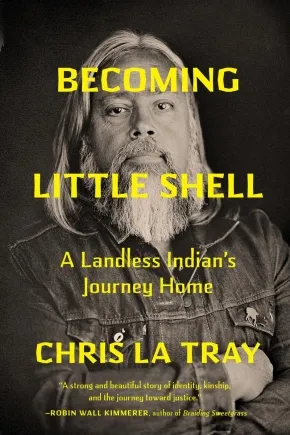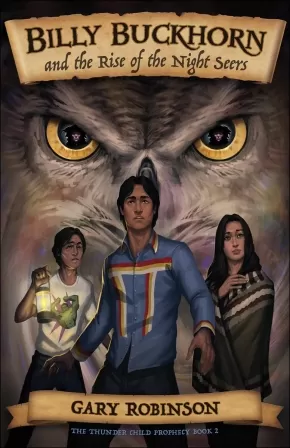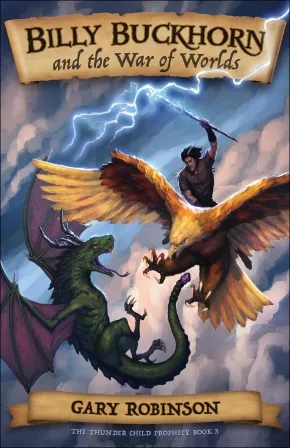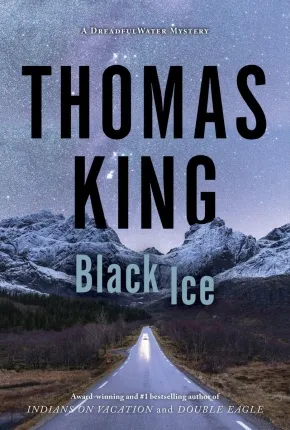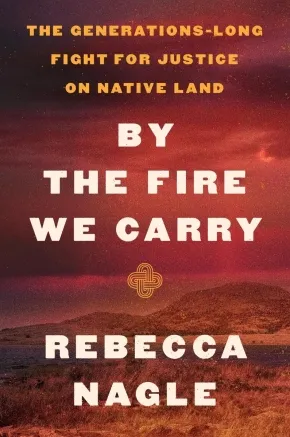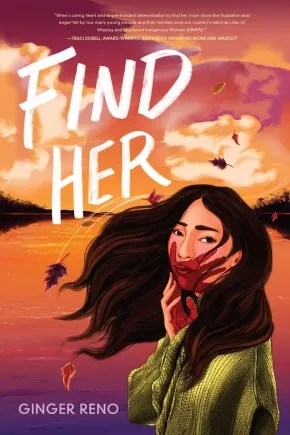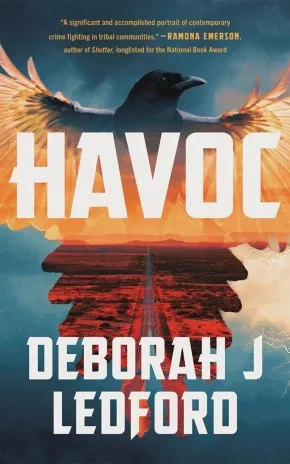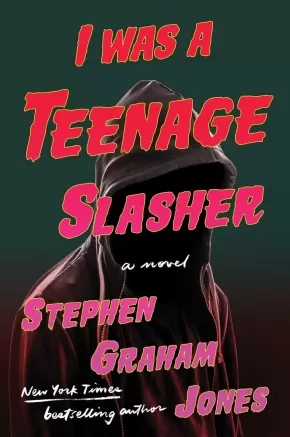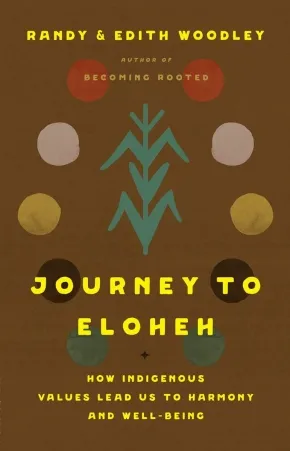
Indigenous Peoples in the United States
31
-
45
of
232 Results;
Sort By
Go To
of 16
Who Gets to Be Indian?: Ethnic Fraud, Disenrollment, and Other Difficult Conversations About Native American Identity
$39.95
Format:
Hardcover
Text Content Territories:
Indigenous American; Native American;
Reading Level: N/A
ISBN / Barcode: 9780807044964
Synopsis:
Synopsis:
An investigation into how Native American identity became a commodity, from cultural appropriation to ethnic fraud to disenrollment
Settler capitalism has been so effective that the very identities of Indigenous people have been usurped, misconstrued, and weaponized. In Who Gets to Be Indian?, scholar and writer Dina Gilio-Whitaker (Colville Confederated Tribes) explores how ethnic fraud and the commodification of Indianness has resulted in mass confusion about what it means to be Indigenous in the United States.
As an entry point to the seemingly intractable problem of ethnic fraud, Gilio-Whitaker critically looks to the film industry, including a case study of Sacheen Littlefeather, who is most known as the Native American woman that rejected an Oscar on behalf of Marlon Brando in 1973—though later revealed, she was not who she said she was. Gilio-Whitaker argues that this pretendian phenomenon originated in Southern California when the United States was forcing assimilation of Indians into white America culturally, but also into its capitalist economic system. With Indianness becoming a marketized commodity in the Hollywood film business, the field became open to anyone who could convincingly adopt an Indian persona.
Deeply researched using socio-historical analysis, Gilio-Whitaker offers insights from her own experiences grappling with identity to provide clarity and help readers understand how the commodification of Indianness have ultimately left many people of legitimate American Indian heritage to be disconnected from their tribes. Personal and compelling, Gilio-Whitaker takes settler capitalism to task and helps us better understand how we got here in order to counteract the abuses of pretendianism and disenrollment.
Reviews
“This incendiary j’accuse isn’t afraid to name names.”—Publishers Weekly, Starred Review
“With clarity and conviction, Dina Gilio-Whitaker exposes what’s at stake for Native people when Indianness becomes a commodity. A sharp, personal, and urgent look at the high cost for actual Native people in a system built to exploit them at every turn.”—Kim TallBear, author of Native American DNA: Tribal Belonging and the False Promise of Genetic Science
“Indigeneity is caught between truth tellers and tricksters. With abiding concern for tribal nationhood, Dina Gilio-Whitaker boldly espouses our truths while confronting the tricksters among us. Indigenous America needs more truth tellers like her and books like this.”—Gabe Galanda, Indigenous rights attorney
“Dina Gilio-Whitaker’s Who Gets to Be Indian? tackles the problem of the commodification of Native identity at a crucial moment in American history. With incisive analysis, Gilio-Whitaker reveals how settler capitalism has distorted and exploited Indigenous identities and exposes the roots of folks pretending to be Native and its harms to Native communities. This book is a call to action and a vital tool for understanding how we can protect Indigenous people. A must-read for anyone seeking to confront the complexities of Native identity, sovereignty, and power in America.”—Liza Black, author of Picturing Indians: Native Americans in Film, 1941–1960
“A fresh and unflinching look into the rise of pretendianism—when it became normalized for Hollywood to grant Native American identities to various grifters. Dina Gilio-Whitaker’s courageous and original analysis will challenge readers, Indigenous or not, to think deeply about the nature of settler colonialism today.”—Darryl Leroux, author of Distorted Descent: White Claims to Indigenous Identity
Additional Information
280 pages | 6.22" x 9.30" | Hardcover
A Snake Falls to Earth (PB)
$19.99
Format:
Paperback
Text Content Territories:
Indigenous American; Native American; Apache; Lipan Apache Tribe of Texas;
ISBN / Barcode: 9781646144136
Synopsis:
Synopsis:
Nina is a Lipan girl in our world. She’s always felt there was something more out there. She still believes in the old stories.
Oli is a cottonmouth kid, from the land of spirits and monsters. Like all cottonmouths, he’s been cast from home. He's found a new one on the banks of the bottomless lake.
Nina and Oli have no idea the other exists. But a catastrophic event on Earth, and a strange sickness that befalls Oli’s best friend, will drive their worlds together in ways they haven’t been in centuries.
And there are some who will kill to keep them apart.
Darcie Little Badger introduced herself to the world with Elatsoe. In A Snake Falls to Earth, she draws on traditional Lipan Apache storytelling structure to weave another unforgettable tale of monsters, magic, and family. It is not to be missed.
Reviews
"Evokes the timeless feeling of listening to traditional oral storytelling.”—Kirkus Reviews
“If Elatsoe was a ten out of ten, then A Snake Falls to Earth is a solid 11. This book could have been twice as long and I still would have begged for more. Although aimed at a young-adult audience, it has the kind of easy appeal and heartfelt tone that will entice younger kids and older adults as well. Anyone reading or buying YA needs to add this to their shelves immediately.” — Locus
“This is a delightful and imaginative novel with alternating protagonists. One is Nina, a teenager trying to translate a story told by her great-great-grandmother in her native Athabaskan language, Lipan. The other is Oli, a cottonmouth snake with the ability to shapeshift, who is learning to find his way after being pushed from the nest. Climate change features, informed by the author’s geoscience degree and PhD in oceanography. Another theme is linguistic diversity and the crucial role of storytelling in keeping cultures alive. A Snake Falls to Earth is also very much a story of friendship.”—Five Books
Educator Information
Recommended by publisher for ages 12 to 18.
#OwnVoices Lipan Apache author.
An original work of Indigenous futurism that draws on Lipan Apache storytelling traditions.
Additional Information
384 pages | 5.50" x 8.25" | Paperback
Becoming Little Shell: A Landless Indian's Journey Home
$42.95
Format:
Hardcover
Text Content Territories:
Indigenous American; Native American; Anishinaabeg; Ojibwe (Chippewa); Little Shell Tribe of Chippewa Indians ;
Reading Level: N/A
ISBN / Barcode: 9781571313980
Synopsis:
Synopsis:
Growing up in Montana, Chris La Tray always identified as Indian. Despite the fact that his father fiercely denied any connection, he found Indigenous people alluring, often recalling his grandmother’s consistent mention of their Chippewa heritage.
When La Tray attended his grandfather’s funeral as a young man, he finally found himself surrounded by relatives who obviously were Indigenous. “Who were they?” he wondered, and “Why was I never allowed to know them?” Combining diligent research and compelling conversations with authors, activists, elders, and historians, La Tray embarks on a journey into his family’s past, discovering along the way a larger story of the complicated history of Indigenous communities—as well as the devastating effects of colonialism that continue to ripple through surviving generations. And as he comes to embrace his full identity, he eventually seeks enrollment with the Little Shell Tribe of Chippewa Indians, joining their 158-year-long struggle for federal recognition.
Both personal and historical, Becoming Little Shell is a testament to the power of storytelling, to family and legacy, and to finding home. Infused with candor, heart, wisdom, and an abiding love for a place and a people, Chris La Tray’s remarkable journey is both revelatory and redemptive.
Reviews
“La Tray’s pride and conviction will have readers eager not only to learn more, but to take action. A brilliant contribution to the canon of Native American literature.”—Kirkus Reviews, starred review
“[A] gripping debut memoir. [. . .] La Tray’s crystalline prose and palpable passion for spreading Indigenous history bolster his account. Readers will be fascinated.”—Publishers Weekly
"Heartbreaking, infuriating, and remarkable, Becoming Little Shell is a memoir that’s packed with historical details,transcending and amplifying a personal quest to understand a family’s past."—Foreword Reviews, starred review
“Smart, emotional, and bracingly honest, La Tray is a powerful storyteller who should have significant appeal.”—Booklist
“I’m in awe of Chris La Tray’s storytelling. Becoming Little Shell creates a multilayered narrative from threads of personal, family, community, tribal, and national histories. Together they make a story as strong and beautiful as a Metis sash—a story of identity, kinship, and the journey toward justice.”—Robin Wall Kimmerer, author of Braiding Sweetgrass
“Chris La Tray is a powerful voice—a force of nature, really—to guide us through the swirling confluence of Native and white worlds, both past and present. Becoming Little Shell is the American story of our era—tracing the arc of its author brought up in the white world before discovering his roots as an original inhabitant of this continent.”—Peter Stark, author of Gallop Toward the Sun
“Indigenous identity can be complicated, and Becoming Little Shell compels us into the thick of it—Native people dispossessed of not just land but recognition; blood quantum laws originally crafted to complete a genocide and still wreaking havoc in identity debates today; racism that drove many Native people to disassociate from their families; and descendants, like La Tray, who have found their way back, fighting for the reconnection of their communities and for the observance of their very existence. La Tray is a loving, discerning, curious, funny, and generous guide. This is a beautiful, big-hearted book.”—Sierra Crane Murdoch, author of Yellow Bird
“Becoming Little Shell is a moving, deeply felt, and incredibly detailed account of Chris La Tray’s search for his origins among the Métis, Pembina, and Little Shell Tribe of Chippewa Indians. Combining memoir, history, interviews, and travel, La Tray gives us nothing less than the history of a people in the form of an absorbing and emotionally searing memoir. This book will, without a doubt, become a classic in Native American literature. Must read.”—David Treuer, author of The Heartbeat of Wounded Knee
“What I appreciate so much about Chris La Tray’s writing on Indigenous identity and history is the wit, clarity, and integrity embodied in every word. Becoming Little Shell beautifully encompasses a journey that we can all learn from, a journey toward asking better questions about land, belonging, and connection, and through this book La Tray epitomizes historian, poet, and teacher. Full of Indigenous history, personal stories, and the complex dance between the two, La Tray reminds us that the journey of finding ourselves and making sense of the way colonialism plays out around us is an essential part of being human. Please read this book. You’ll be so glad you did.”—Kaitlin B. Curtice, author of Living Resistance
Additional Information
320 pages | 6.00" x 9.00" | Hardcover
Billy Buckhorn and the Rise of the Night Seers
$18.95
Format:
Paperback
Text Content Territories:
Indigenous American; Native American; Cherokee;
ISBN / Barcode: 9780966931754
Synopsis:
Synopsis:
Cherokee teen Billy Buckhorn had no idea what was in store for him when Osage teen Lisa Lookout and her family showed up on his doorstep. A tribal prophecy, carried by their family for a thousand years, indicates Billy is the long-awaited Chosen One, and that he is destined to battle dark ancient forces that are planning to retake control of the Middleworld. As Billy comes to accept his prophesied new role, he must also learn to accept that he and his loved ones are now targets of the most powerful shape-shifting Native American witches and sorcerers on Turtle Island. Known as the Night Seers of the Owl Clan, Billy must use old Indigenous ways, intertwined with new technology, to fight and defeat this evil force.
Billy Buckhorn and the Rise of the Night Seers is the second thrilling installment of the Thunder Child Prophecy Series.
Educator & Series Information
Recommended for grades 10 to 12.
This is the second book in the Thunder Child Prophecy, following Billy Buckhorn and the Book of Spells.
Additional Information
304 pages | 5.50" x 8.50" | b&w illustrations, 1 bibliography | Paperback
Billy Buckhorn and the War of Worlds
$18.95
Format:
Paperback
Text Content Territories:
Indigenous American; Native American; Cherokee;
ISBN / Barcode: 9781570674266
Synopsis:
Synopsis:
Billy Buckhorn, aka Thunder Child, battles the Owl Clan and the Serpent Society when they renew their ancient evil alliance. First, they launch a series of supernatural events meant to usher in a new age of horrific Underworld dominance. Next, bizarre weather patterns produce raging floods, and fantastic beasts from Native American legends roam North America once again. Worst of all, the Snake Priest, riding the ancient and malevolent Winged Serpent, rises from the deepest regions below to exact revenge and take control of everyone and everything in the Middleworld! Can Billy and his dedicated, gifted team--his oldest friend Chigger, Osage girlfriend Lisa, the Intertribal Medicine Council, and his allies in the Upperworld--prevent this apocalypse from happening?
Billy Buckhorn and the War of Worlds is the third thrilling installment of the Thunder Child Prophecy Series.
Educator & Series Information
The publisher recommends books in the Thunder Child Prophecy series for grades 10 to 12; however, they note that this title is appropriate for ages 12+.
This is the third book in the Thunder Child Prophecy, following the first book Billy Buckhorn and the Book of Spells and the second book Billy Buckhorn and the Book Of Spells.
Additional Information
336 pages | 5.50" x 8.50" | b&w illustrations, 1 bibliography | Paperback
Black Ice
$25.99
Format:
Paperback
Text Content Territories:
Indigenous American; Native American; Cherokee;
Grade Levels: 12; University/College;
ISBN / Barcode: 9781443474078
Synopsis:
Synopsis:
Thumps DreadfulWater has a lot on his plate. With Duke out of commission following his wife’s tragic death, Thumps is appointed temporary deputy sheriff, a role that makes him doubly eager for Duke’s swift recovery.
First, a myopic private investigator dies while in custody. The autopsy concludes that he died of natural causes; then an assault rifle is found in the trunk of the dead man’s rental car, and the mystery woman he was investigating disappears. Meanwhile, Thumps contends with a couple of horse-thieving octogenarians and a large, slobbery dog acquired in the line of duty.
As the rest of Chinook comes together to cheer on golf novice Wutty Youngbeaver, who is competing in the US Open qualifying tournament up at Shadow Ranch, Claire and Ivory decamp to Alberta, leaving Thumps to contemplate the simplicity of a life lived alone. If he can’t manage something as simple as a dog or a couple of cats, how can he be responsible for another human being? Two human beings?
The plot thickens when ninja assassin Cisco Cruz returns to Chinook, and Thumps finds himself knee-deep in a complicated web of deceit spun by a nefarious collective known as Black Ice. His job? To sort through the lies. It’s like a game of Jenga, where the blocks need to be removed carefully, one by one, or the whole structure will topple.
Series Information
This book is from the DreadfulWater Mystery series, a mystery/detective series from Thomas King.
Books in this series include:
- Dreadful Water
- The Red Power Murders
- Cold Skies
- A Matter of Malice
- The Obsidian Murders
- Deep House
- Double Eagle
- Black Ice
Additional Information
384 pages | 6.00" x 9.00" | Paperback
By the Fire We Carry: The Generations-Long Fight for Justice on Native Land
$39.50
Format:
Hardcover
Text Content Territories:
Indigenous American; Native American; Muscogee (Creek); Cherokee; Cherokee Nation (Cherokee Nation of Oklahoma);
Reading Level: N/A
ISBN / Barcode: 9780063112049
Synopsis:
Synopsis:
A powerful work of reportage and American history that braids the story of the forced removal of Native Americans onto treaty lands in the nation’s earliest days, and a small-town murder in the ‘90s that led to a Supreme Court ruling reaffirming Native rights to that land over a century later.
Before 2020, American Indian reservations made up roughly 55 million acres of land in the United States. Nearly 200 million acres are reserved for National Forests—in the emergence of this great nation, our government set aside more land for trees than for Indigenous peoples. That changed on July 9, 2020, when a high-profile Supreme Court case—which originated with a small-town murder two decades earlier—affirmed the reservation of Muscogee Nation. The ruling resulted in the largest restoration of tribal land in U.S. history, merely because the Court chose to follow the law.
In the 1830s Muscogee people were rounded by the US military at gunpoint and forced into exile halfway across the continent. At the time, they were promised this new land would be theirs for as long as the grass grew and the waters ran. But that promise was not kept. When Oklahoma was create on top of their land, the new state claimed their reservation no longer existed. Over a century later, when a Muscogee citizen was sentenced to death for murdering another Muscogee citizen, his defense attorneys argued the murder occurred on the reservation of his tribe, and therefore Oklahoma didn’t have the jurisdiction to execute him. Oklahoma argued that reservation no longer existed. In the summer of 2020, the Supreme Court said: no more; a ruling that would ultimately underpin multiple reservations covering half the land in Oklahoma, including Nagle’s own Cherokee Nation.
Here Rebecca Nagle tells the story of the generations-long fight for tribal land and sovereignty in Eastern Oklahoma. By chronicling both the contemporary legal battle and historic acts of Indigenous resistance, By the Fire We Carry stands as a landmark work of American history. The story it tells exposes both the wrongs that our nation has committed in its long history of greed, corruption and lawlessness, and the Native battle for the right to be here that has shaped our country.
Educator Information
By the Fire We Carry is hard-hitting American history that expands on the nation's story. It tells of the treatment of Native Americans, their removal and displacement, and the genocide committed against them by the US government from their viewpoint.
Additional Information
352 pages | 6.00" x 9.00" | 23 b/w photographs and maps | Hardcover
Earthdivers, Vol. 2: Ice Age
$21.99
Artists:
Format:
Paperback
Text Content Territories:
Indigenous American; Native American;
Reading Level: N/A
ISBN / Barcode: 9798887240688
Synopsis:
Synopsis:
Guest artists Riccardo Burchielli (DMZ), Patricio Delpeche, and Emily Schnall join Stephen Graham Jones—New York Times best-selling author of The Only Good Indians and My Heart Is a Chainsaw—for a mission to the Ice Age exploring America’s pre-Columbian past!
When Martin and Tawny’s children disappeared, the couple barreled into the desert to track them down at any cost. Instead, they ran afoul of another group of rovers who claimed to be saving the world by traveling through a cave portal to the year 1492 to prevent the creation of America—an idea that defied belief until the grieving parents were lured into the cave and vanished in time and space.
Now alone, Tawny must adapt to the wild marshlands of prehistoric Florida, circa 20,000 BC, and the breathtaking and bloodthirsty megafauna are the least of her problems when she’s caught in a war between a community of native Paleo-Indians and an occupying Solutrean force. Tawny’s odds of survival are in free fall, but she’s a mother on a mission…and she’s holding on to hope that the cave brought her here for a family reunion.
In the tradition of Saga, the next chapter of the critically acclaimed sci-fi epic is here in Earthdivers Vol. 2.
Series Information
This is the second book in the Earthdivers series.
Additional Information
104 pages | 6.62" x 10.18" | Paperback
Earthdivers, Vol. 3: 1776
$28.99
Artists:
Format:
Paperback
Text Content Territories:
Indigenous American; Native American;
Reading Level: N/A
ISBN / Barcode: 9798887241463
Synopsis:
Synopsis:
Join or die! New York Times best-selling author Stephen Graham Jones and artist Davide Gianfelice are back in action for the next chapter of their heart-pounding historical sci-fi slasher Earthdivers!
A team of time-traveling Indigenous survivors had one goal: save the world from an American apocalypse by sending one of their own on a suicide trip to kill Christopher Columbus and course-correct world history.
Mission accomplished? Maybe not. Blood is still soaking into the sands of San Salvador as Tad’s friends suffer the consequences of his actions—and their own slippery moral rationalizations—620 years in the future. Faced with a choice to watch the world crumble or double down on their cause, the path is clear for Seminole two-spirit Emily: it's personal now, and there’s no better time and place to take another stab at America than Philadelphia, 1776.
But where violence just failed them, she has a new plan: pass as a man, infiltrate the Founding Fathers, and use only wit and words to carve out a better future in the Declaration of Independence. No need to cut throats this time…right?
The next chapter of the critically acclaimed sci-fi epic is here in Earthdivers Vol. 3.
Series Information
This is the third book in the Earthdivers series, preceded by Earthdivers, Vol. 1: Kill Columbus and Earthdivers, Vol. 2: Ice Age.
Additional Information
208 pages | 6.69" x 10.25" | Paperback
Find Her
$24.49
Format:
Hardcover
Text Content Territories:
Indigenous American; Native American; Cherokee;
ISBN / Barcode: 9780823454808
Synopsis:
Synopsis:
Five years, three months, and twelve days.
That’s how long Wren’s mother has been missing.
In dreams, Wren can see her again: her eyes, her hair, her smile. She can even hear her laugh. Her mother, one of hundreds of Native Americans considered missing or murdered in Oklahoma. Sometimes it seems like Wren and her grandmother are the only people still looking. Even more frustrating, Wren's overprotective father won't talk about it.
Wren refuses to give up, though. And an opportunity to find lost pets seems like a real way to hone her detective skills. But everything changes when one of the missing pets is found badly hurt. Soon, there are others.
With help from an unlikely friend, Wren vows to unmask whoever is behind the animal abuse. If she can do this, maybe she can do the same for her mother's case. She'll just have to keep it secret from her father who will certainly put an end to all her sleuthing if he finds out.
Find Her explores the crisis of missing Indigenous women from the perspective of a sensitive young Cherokee girl who yearns to find her mother, while also navigating a chilling town mystery, a new friendship, and a family in need of healing.
Awards
- A Junior Library Guild Gold Standard Selection
Reviews
"Via crisp prose, Reno meshes plot threads involving abandoned shelter pets and a mystery surrounding a locator on Wren’s grandmother’s keys, which emphasize the futility Wren feels in trying to find someone who seems unreachable."—Publishers Weekly, Starred Review
"A dramatic and captivating call for attention."—Kirkus Reviews
"Cherokee writer Reno crafts a powerful debut centering an important issue affecting Indigenous women and families; a strong purchase for all middle schools."—School Library Journal
"Wren's caring heart and single-minded determination to find her mom shows the frustration and anger felt by too many young people and their families over our country's national crisis of Missing and Murdered Indigenous Women (MMIW)."—Traci Sorell, award-winning author of Indian No More and Mascot
"Find Her is a compelling novel written with sensitivity by gifted Cherokee writer Ginger Reno. In this contemporary story of Wren and her family in Cherokee Nation, Reno addresses the injustice of so many missing and murdered indigenous relatives and the heartbreak and hope that comes with not knowing. Find a place on your shelves for Find Her."—Andrea L. Rogers, award-winning author of Man Made Monsters
Educator Information
Recommended for ages 10+
Additional Information
|
Fur Trade Nation: An Ojibwe's Graphic History
$42.16
Format:
Hardcover
ISBN / Barcode: 9781962910002
Synopsis:
Synopsis:
We clothed the royals. We fed the worker. We guided the traveler. We abetted the soldier. We are not afraid to love. So begins Carl Gawboy's groundbreaking graphic history of the Fur Trade Era. From 1650 to 1850, the Ojibwe Nation was the epicenter of the first global trading network. Trade goods from Africa, Asia, Europe, and South America flowed into the Great Lakes region, floating along Ojibwe waterways in birchbark canoes paddled by mixed-race Voyageurs. Gawboy offers a fresh perspective on the fur trade era, placing Ojibwe technology, kinship systems, cultural paradigms, and women at the heart of this remarkable era, where they have always belonged.
Additional Information
202 pages | 8.25" x 11.00" | Hardcover
Havoc
$24.99
Format:
Paperback
Text Content Territories:
Indigenous American; Native American; Taos Pueblo;
Reading Level: N/A
ISBN / Barcode: 9781662510458
Synopsis:
Synopsis:
In this tightly paced sequel to Redemption, Eva “Lightning Dance” Duran joins the Taos Pueblo tribal police department to uncover a member of her community’s murder…and the conspiracy behind it.
It’s been over a year since the case that almost broke her, but when Eva “Lightning Dance” Duran is called back to duty, she doesn’t hesitate to answer. A bank robbery has left an officer down and a suspect on the run. Law enforcement is in hot pursuit, and residents are on the lookout—but before anyone can catch the criminal, tragedy strikes.
A member of the Taos Pueblo tribe has been shot and killed. The culprit? An untraceable 3D printed gun. With the support of fellow tribal cops, Eva breaks the news to the victim’s family and swears to find justice.
More violence follows, feeding the rising racial tensions between the Taos Pueblo people and the Hispanic community. New evidence forces Eva to consider the possibility that the bank robbery and 3D guns are related, but until she figures out how, there’s no telling how deep this crime ring goes…or how far its evasive ringleader will go to protect it.
Reviews
“Ledford’s sequel to Redemption excels…For fans of books by both Tony and Anne Hillerman, along with others that embody the spirit and landscape of the Southwest.” —Library Journal
“Atmospheric, poignant, and set in the Taos Pueblo, Ledford’s tribal police officer Eva ‘Lightning Dance’ Duran doesn’t flinch in this dark, twisting tale that’s riveting from the first page. A fantastic second book in this new series from a master of crime fiction.” —Jamie Freveletti, award-winning and internationally bestselling author of the Emma Caldridge series
Series Information
This book is part of the Eva "Lightning Dance" Duran series.
Additional Information
352 pages | 5.50" x 8.50" | Paperback
I Was A Teenage Slasher: A Novel
$39.99
Format:
Hardcover
Text Content Territories:
Indigenous American;
Reading Level: n/a
ISBN / Barcode: 9781668022245
Synopsis:
Synopsis:
From New York Times bestselling horror writer Stephen Graham Jones comes a classic slasher story with a twist—perfect for fans of Riley Sager and Grady Hendrix.
1989, Lamesa, Texas. A small west Texas town driven by oil and cotton—and a place where everyone knows everyone else’s business. So it goes for Tolly Driver, a good kid with more potential than application, seventeen, and about to be cursed to kill for revenge. Here Stephen Graham Jones explores the Texas he grew up in, the unfairness of being on the outside, through the slasher horror he lives but from the perspective of the killer, Tolly, writing his own autobiography. Find yourself rooting for a killer in this summer teen movie of a novel gone full blood-curdling tragic.
Educator Information
Genre: Slasher Horror / Thriller
Additional Information
384 pages | 6.00" x 9.00" | Hardcover
Jeremy Frey: Woven
$67.50
Format:
Hardcover
Text Content Territories:
Indigenous American; Native American; Passamaquoddy (Peskotomuhkati);
ISBN / Barcode: 9780847899708
Synopsis:
Synopsis:
The only book on award-winning Indigenous basket maker Jeremy Frey, accompanying his first major traveling exhibition.
Frey (Passamaquoddy) is one of the most respected Indigenous basket makers working today. Descended from a long line of basket makers, his work is known for its intricate design and exquisite artistry, which reflect both traditional techniques and his own creative vision.
This catalogue considers his work from a variety of perspectives. Secord, whom Frey credits for guiding his career as the founder of Maine Indian Basketmakers Alliance, contributes a detailed biographical essay. DeSimone situates Frey’s work in the broader field of contemporary art, with a specific focus on the new video work he is making for the exhibition. Hoska focuses on Frey’s art in the broader context of Native basket and fiber arts. And Mize considers the ways in which his expanding practice registers ecological knowledge, time, and the impact of climate change.
Additional Information
160 pages | 8.85" x 11.91" | Hardcover
Journey to Eloheh: How Indigenous Values Lead Us to Harmony and Well-Being
$37.99
Format:
Hardcover
Text Content Territories:
Indigenous American; Native American; Shoshone; Eastern Shoshone Tribe; Cherokee; United Keetoowah Band ;
ISBN / Barcode: 9781506496979
Synopsis:
Synopsis:
Rooted in ten Indigenous values, this thoughtful, holistic book-written by Randy Woodley, a Cherokee descendant recognized by the Keetoowah Band, and Edith Woodley, an Eastern Shoshone tribal member-helps readers learn lifeways that lead to true wholeness, well-being, justice, and harmony.
The pursuit of happiness, as defined by settlers and enshrined in the American Dream, has brought us to the brink: emotionally, spiritually, socially, and as a species. We stand on a precipice, the future unknown. But Indigenous people carry forward the values that humans need to survive and thrive. In Journey to Eloheh, Randy and Edith Woodley help readers transform their worldviews and lifestyles by learning the ten values of the Harmony Way. These ten values, held in common across at least forty-five Indigenous tribes and nations, can lead us toward true well-being: harmony, respect, accountability, history, humor, authenticity, equality, friendship, generosity, and balance. By learning, converting to, and cultivating everyday practices of Eloheh--a Cherokee word meaning harmony and peace--we have a chance at building well-being and a sustainable culture.
In this riveting account of their own journeys toward deepening their indigeneity and embodying harmony, Edith, an activist-farmer, and Randy, a scholar, author, teacher, and wisdom-keeper, help readers learn the lifeways of the Harmony Way. The journey to Eloheh holds promise for all of us, Indigenous or not.
We know the Western worldview is at odds with a sustainable Earth, a just common life, and personal well-being. Together we can convert to another way of living--one that recognizes the Earth as sacred, sees all creation as related, and offers ancestral values as the way forward to a shared future.
Reviews
"Edith and Randy Woodley's passion and persistence to create spaces of community and care are inspiring. A blend of storytelling, theology, and guidance harvested directly through Indigenous wisdom, Journey to Eloheh reminds us to stay true to the path of kinship and belonging, and to never give up on justice and peacemaking in the world. I highly recommend this book for anyone who is searching for a way to be a better relative on this earth or to fight for a better reality for future generations. This book will help you get there." --Kaitlin B. Curtice, award-winning author of Native and Living Resistance
"Spiritual journey as autobiography: like a Navajo weaver, Journey to Eloheh skillfully connects Native American theology and personal experience into a way of life. If you are looking for your own path, Edith and Randy Woodley's story is a good place to begin." --Steven Charleston, author of Ladder to the Light, Spirit Wheel, and We Survived the End of the World
"There is so much we can all learn from the wisdom of Indigenous culture. In this book, Randy and Edith Woodley invite us to join them on a journey of learning a different way of living that leads to wholeness, abundance, and peace. They generously share their life experience and spiritual insights to show us a better path toward harmony with the whole of creation. I highly recommend it!" --Dr. Brenda Salter McNeil, author of Becoming Brave and Roadmap to Reconciliation 2.0
"A practical antidote to despair, hopelessness, and aimless consumption, this book offers a robust and healing path to well-being for all of us. The Woodleys are wise and trustworthy guides for restoration and embodied goodness within the community of creation." --Sarah Bessey, author of Field Notes for the Wilderness: Practices for an Evolving Faith
"Randy and Edith Woodley write with insight and wisdom from their years of experience. They have prophetic voices that draw attention to the needs of all of our relatives. Their voices rise out of difficult situations in which they have done more than survive; they are showing how to flourish in an ever-changing world." --Ray Aldred, director of the Indigenous Studies Program, Vancouver School of Theology
"For many years, I have considered Randy Woodley one of my teachers. His books, lectures, and personal conversations--together with his humble, yet bold, spirit as a teacher--have enriched and challenged me. His new book, co-written with his wise and eloquent wife, Edith, is a masterpiece, a book I would recommend to anyone and everyone. It beautifully combines the sharing of their life-story with the essence of their lifeway, articulated in ten powerful Indigenous values that are as deeply spiritual as they are deeply practical." --Brian McLaren, author, teacher, and activist
Educator Information
Keywords / Themes: Well-Being; the Harmony Way (Eloheh); Ten Eloheh Values; Indigenous Knowledge, Indigenous Values; Personal Growth.
Additional Information
264 pages | 5.75" x 8.75" | Hardcover
Sort By
Go To
of 16

